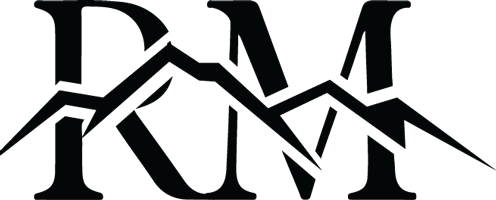What is a sliding genioplasty:
A sliding genioplasty is a surgical procedure performed to reshape and reposition the chin bone (mandible) for either functional or aesthetic reasons. The term “genioplasty” originates from the Latin word “genio,” which refers to the chin and “plasty,” which means molding or reshaping.
What are some of the indications for a sliding genioplasty?
Cosmetic Enhancement: A sliding genioplasty can improve facial harmony by altering the size, shape and position in order to achieve better facial proportions. At Rocky Mountain Surgical Arts, Dr. Fathimani commonly treats patients with a:
- Retruded chin
- Overly prominent chin
- Deviated chin
- Short chin
- Long chin
- Wide chin
- Narrow chin
Functional Improvement: A sliding genioplasty can correct certain conditions related to the positioning of the chin. For example, the position of the chin can affect breathing in patients with sleep apnea. A sliding genioplasty can be performed to address and significantly reduce these functional issues.
Who performs a sliding genioplasty?
Picking a qualified surgeon with significant experience is crucial. The surgeon should be board certified and have tremendous experience working on the facial anatomy of the chin bone. Not all sliding genioplastys are the same and having a surgeon understand the indications and intricate anatomy is very important to ensuring the patient achieves a great result. Dr. Fathimani is one of the few surgeons nationally to be board certified in Oral and Maxillofacial Surgery, board certified by the American Board of Facial Cosmetic Surgery and be a Fellow of the American College of Surgeons. He has performed over one thousand facial reconstructive, trauma and cosmetic surgeries. Prior to opening Rocky Mountain Surgical Arts, Dr. Fathimani was a leading facial surgeon in NYC, working at one of the busiest Level 1 trauma centers in the Unites States, where he routinely performed surgeries on the chin bone.
What will I expect during my consultation?
At Rocky Mountain Surgical Arts, we strive in unique patient experiences. All our patients are greeted by our patient concierge team where they will discuss any preliminary questions. During the consultation, each patient will have the opportunity to discuss their concerns and goals. Dr. Fathimani will review their medical and health history and assess each individual case. The examination will consist of a full facial assessment and measurements, pre-operative photos and a 3D facial scan where the patient will be able to immediately see their entire facial bone anatomy. Dr. Fathimani will then create a customizable treatment plan. A typical example is shown below:

Does Dr. Fathimani see out of state patients?
Absolutely. Dr. Fathimani is a nationally recognized surgeon in his field having treated many patients he is highly sought after for sliding genioplasty surgeries. Consultations are performed virtually and our patient concierge team will provide the necessary steps along the process.
How is the procedure done?
Anesthesia: The procedure is typically performed under general anesthesia to ensure the patient is asleep and pain-free during surgery.
Incision: A very small incision is performed inside the mouth along the lower gum line to access the chin bone. There are no external scars as the entire procedure is performed inside the mouth.
Bone reshaping: Dr. Fathimani utilizes state-of-the-art instrumentation to perform the surgery. While most surgeons utilize a vibrating saw, Dr. Fathimani uses ultrasonic technology to carefully cut the chin bone and significantly minimize bleeding and nerve injury. Dr. Fathimani is also one of the few surgeons to utilize guided digital technology to accurately cut the bone and customize the surgery for each individual patient.
Fixation: The repositioned bony segment is stabilized using plates and screws. This hardware helps maintain the new position while the bone heals. Dr. Fathimani commonly gets questions from patients asking if the hardware sets off metal detectors. The plates and screws are made of titanium, which is non-magnetic so it will not trigger off standard metal detectors.
Closure: After the bone is secured in its new position, Dr. Fathimani uses a series of delicate suturing techniques to ensure the incisions are closed with precision.
Dressing: A chin wrap and facial dressing is applied in a specific way to assist in swelling and maintain the position of the chin post-operatively.
What other procedures are done simultaneously to improve the aesthetic outcome?
Since Dr. Fathimani is a dual Oral, Maxillofacial Surgeon and Facial Cosmetic Surgeon, he has extensive expertise in providing a customizable treatment plan to address your entire jaw line. Some of these simultaneous procedures include:
- Facial and neck liposuction
- FaceTite: this is a minimally invasive cosmetic procedure that uses radiofrequency energy to tighten and contour the skin of the face and neck. It is a non-surgical alternative to more invasive procedures like facelifts, offering noticeable results with less downtime and a shorter recovery period. FaceTite is often used to address sagging skin, jowls, and excess fat in the lower face and neck areas.
- Morpheus8: this is a minimally invasive cosmetic procedure that combines microneedling with radiofrequency energy to rejuvenate and tighten the skin. It’s designed to improve skin texture, reduce wrinkles and promote collagen production, resulting in smoother, firmer, and more youthful-looking skin. Morpheus8 is suitable for treating various areas of the face and body and it’s especially effective for addressing concerns like wrinkles, fine lines, acne scars and skin laxity.
- Dermal fillers and botox
What is the recovery like?
Since Dr. Fathimani utilizes a specific ultrasonic technique as well as digital technology to precisely cut the chin bone and minimize swelling, the recovery period is drastically reduced. After surgery, patients can expect some swelling, bruising and discomfort around the chin and jaw area. Dr. Fathimani utilizes Exparel to reduce post-operative pain and narcotic usage; however, pain medications are still prescribed to manage any breakthrough pain. The initial recovery period involves following a soft or liquid diet to avoid placing excessive stress on the healing jaw. Over time, swelling and bruising gradually subside and patients can resume a normal diet. The chin wrap is usually removed in one week and while most patients can expect to return to work in one week, some patients, especially those who work remotely, can return earlier. The final results of sliding genioplasty become more apparent as the healing process progresses. Swelling subsides over several weeks and the improved chin shape and position become more evident.
What are the risks and complications?
As with any surgical procedure, there are potential risks and complications associated with sliding genioplasty that will be explained in more depth at the time of the consult. Some of these may include infection, changes in sensation of the lip, chin and tongue regions, inadequate bone healing and asymmetry. Dr. Fathimani utilizes cutting edge technology and ultrasonic techniques to specifically reduce and minimize such risks.
Are there alternatives?
Depending on your goals, there are alternative procedures that may achieve similar outcomes to some degree. These may include chin implants or non-surgical treatments like dermal fillers.


